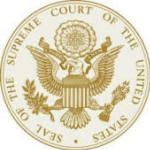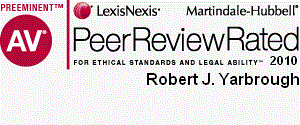Newsletter Issue 81 - November 2015
In this issue:
Diary of Anne Frank
Enhanced damages for patent infringement
Breaking News: The Diary of Anne Frank was Also Written by Her
Father!

Most of us are familiar with the Diary of Anne Frank in which a
13 year old girl writes in her own words about Nazi occupation and
coming of age under the unimaginable circumstances of hiding under
Nazi occupation. Anne Frank perished 70 years ago in the
Bergen-Belsen concentration camp but her words survived thanks to
her father, Otto Frank, the only surviving family member, who
published Anne's diary in 1952, explaining in the book's prologue
that the diary contained the words of his daughter.
Now, the New York Times reports that
Anne Frank's diary has a new
and previously undisclosed co-author, Otto Frank. How can that be?
The Swiss foundation that owns the copyright to The Diary of Anne
Frank is on record of stating that Anne's father is not only the
editor but also the co-author of the diary, warning that others who
were waiting for the copyright to expire will be sorely
disappointed. Why would the foundation do that?
Copyrights in Europe expire 70 years after the death of the author,
which means that the diary's copyright, if she were the only author,
is on the cusp of its expiration date. (Not so in the United States
when it would expire in 2047, 95 years after the first publication
of the book.) Expiration of the copyright would have important
financial implications for the Anne Frank Foundation, which
distributes proceeds from the book to various charities. Should the
diary become public domain, the Foundation would lose all control
over and royalties would cease.
According to the New York Times, announcement of the new co-author
"provoked a furor" among stakeholders of Anne Frank's legacy, in
particular the Anne Frank House Museum in Amsterdam, and other
people who want to publish the diary without royalty restrictions.
Some threatened to publish the work even if the Anne Frank
foundation carried through with its intentions. One interesting
aspect of the furor is that announcement of a new co-author might
jeopardize the book's copyright on grounds that the Anne Frank
foundation lied for years about Anne Frank being the sole author of
her diary.
In another interesting twist, the New York Times believes that if
the copyright remains with the Anne Frank Foundation, its copyright
might extend even beyond 2050, 70 years after Otto Frank's death.
That is because a second editor, Mirjam Pressler, revised, edited and added 25
percent more material from Anne Frank's diary for what was called a
"definitive edition" in 1991. She qualified for a copyright for her
creative work, and the rights were transferred to the foundation,
said its lawyer, Kamiel Koelman.
She is still living, he added, giving them copyright ownership from
the date of her future death for at least another 70 years.
The quest to extend copyright protection is not new. See our
previous article about how corporations have managed to do this in
the United States through the legislative process.
Photo credit: "AnneFrank dHont" by brbbl - Own work. Licensed under
CC BY-SA 3.0 via
Wikimedia Commons
When is a patent owner entitled to 'enhanced damages' for
infringement?
Section 284 of the patent statute provides that the trial judge may award the
patent owner money damages for infringement and may increase those damages by up to
three times the patent owner's actual money damages.
The statute appears to give the trial judge broad discretion to
enhance a money damage award for patent infringement.
If section 284 were widely and uniformly applied, 'enhanced damages'
would provide substantially increased money awards to patent owners
and act as a substantial deterrent to patent infringement.
The Federal
Circuit Court of Appeals, which hears appeals of patent cases, has
severely limited the discretion of judges to award enhanced
damages. The Federal Circuit created a two-part test:
enhanced damages are only available if (1) the
infringer acted despite "an objectively high likelihood that its
actions constituted infringement of a valid patent", and (2) "that
this objectively-defined risk was either known or so obvious that it
should have been known to the accused infringer." The Federal
Circuit also concluded that whether the infringer's conduct meets
this 'objective recklessness' standard is a question for the judge,
not the jury. As a result, an award of enhanced damages is
difficult to obtain and, if obtained, is easy to reverse on appeal.
The problem with the Federal Circuit's approach is that it is not
supported by the statute and appears contrary to the recent Supreme
Court decision of
Octane Fitness v ICON in a closely related area;
namely, whether a trial judge in a patent case may award attorney's
fees to the prevailing party.
As has happened several times in recent years, the U.S. Supreme
Court has stepped into the fray and has accepted appeals from two
Federal Circuit cases on the question of enhanced damages. The two
cases are Halo Electronics, Inc. v. Pulse Electronics, Inc.
(14-1513) and Stryker Corporation v. Zimmer, Inc. (14-1520). As a
general rule, when the Supreme Court accepts an appeal from a
Federal Circuit patent case, it will reverse the Federal Circuit and
write new law. We suspect that the Supreme Court will
restore discretion to assess enhanced damages to the trial judges,
which is a good thing.
We'll be watching these consolidated cases closely.

